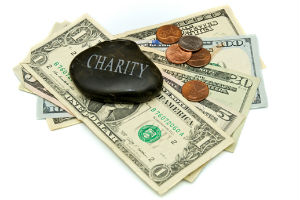Approximately two dozen fundraising and nonprofit influencers are slated to meet in Dallas on Feb. 7 in an attempt to come up with a plan for a national push to increase giving past the stagnant roughly 2 percent of Gross Domestic Product (GDP).
Coordinated by The Giving Institute, an organization of mostly fundraising consultants and technology firms, the gathering is to begin discussions on whether there is a need for a national examination of giving practices, similar to the Commission on Private Philanthropy and Public Needs in 1973-75, tabbed as the “Filer Commission.” The commission’s 240-page report, “Giving In America,” was the launching pad for infrastructure organizations such as the National Committee for Responsive Philanthropy (NCRP) and Independent Sector (IS).
The commission made many suggestions, including an emphasis on research on fundraising methodology, donor behavior, educational opportunities and the interaction with the federal government and the role that government can play in boosting philanthropy. Along with members of The Giving Institute, several influencers at nonprofit organizations have been invited to the event, according to Ted Grossnickle, CFRE, of the firm Johnson, Grossnickle & Associates. He is also 1st vice chair of The Giving Institute’s board.
Grossnickle stressed that his comments were his own and not necessarily representative of The Giving Institute or those invited to the event. He said the gathering and eventual commission has to be “something that is representative of many, many people and sectors.” The idea is to drive home the point that it can start a national conversation having “many people, many citizens in all walks of life thinking even briefly about generosity.” Those invited to the meeting were asked to keep confidential details of the meeting.
The Giving Institute has reached out to Independent Sector, Indiana University Lilly Family School of Philanthropy and others although details of who might attend were not yet available. Grossnickle said it is still early in event planning. “The sense is a group of 20 to 25 persons in this first conversation,” he said, calling it “a working committee.”
The goal is to have a national infrastructure by late 2018. He declined to discuss potential funding for the endeavor but sources close to the plan’s development said the target is roughly $2 million to start. They also said there is a nine-point plan for the meeting: To further define the focus of work and charge; organize as a legal entity; personally support and decide funding; hire a project director and other staffing; identify research focus and commission that research; plan for dissemination of the research and information; work with members of Congress for recognition of the group and work; draft a plan for communications of commissions work; and, build support for the national commission.
“The Commission on Private Philanthropy and Public Needs” was headed up by John Filer, chairman of Aetna Insurance, and became commonly known as “The Filer Commission.” The conversation was started by John D. Rockefeller III after passage of the Tax Reform Act of 1969. There were more than 700 funders of the commission and Rockefeller reportedly contributed $200,000.
Recommendations for the commission’s final report fell into three categories: Proposals involving taxes and giving; those that affect the “philanthropic process,” the interaction between donors, donees and the public; and, a proposal for a permanent commission on the nonprofit sector. The commission examined the existing governmental inducement to giving and considered several proposed alternatives, including tax credits for giving and matching grant systems.
In doing so, it kept these six objectives in mind: To increase the number of people who contribute significantly to and participate in nonprofit activities; To increase the amount of giving; To increase the inducements to giving by those in low- and middle-income brackets; To preserve private choice, in giving; To minimize income losses of nonprofit organizations that depend on the current pattern of giving; and, To be as “efficient” as possible. In other words, any stimulus to giving should not cost significantly more in foregone government revenue than the amount of giving actually stimulated.
In particular, commission members believed that the charitable deduction should be “retained and added on to rather than replaced by another form of governmental encouragement to giving.” The original report was heavy on governmental involvement in charity, including oversight and a national commission.
Some in the sector agreed that more sector research was required but that it needed to be more inclusive. Released at the same time of the Filer report and speaking to those issues was a paper written by James Abernathy, titled “Private Philanthropy: Vital and Innovative? Or Passive and Irrelevant?”
Leonard L. Silverstein, the commission’s original executive director and former advisor to Rockefeller, still believes that a government panel is a good idea. Now age 98 and working as an attorney at the Washington, D.C. firm Buchanan Ingersoll & Rooney PC, he told The NonProfit Times that government’s place in the giving process is to “grease the wheels” so that citizens give to charity.
A summit meeting was convened in Washington, D.C., in 1999, bringing together sector leaders and many of the players in the original Filer Commission. The consensus was that the sector had evolved to a point with regard to research and participation that a new commission was not necessary. Since then, giving has remained 2 percent of GDP. The focus of the new gathering would to find methods to push that number higher.











